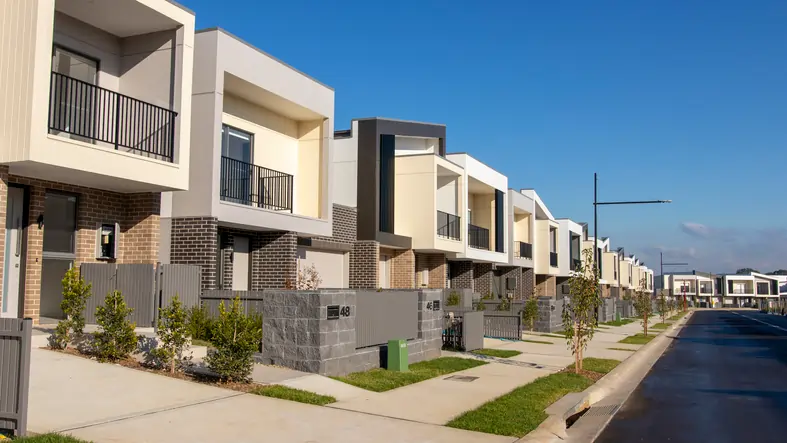
Emerging Real Estate Trends in Australia: What Investors Need to Know
Introduction
The Australian real estate market is continuously evolving, influenced by various economic, social, and technological factors. As we progress through 2024, understanding these trends is crucial for making informed investment decisions.
This article explores the key trends shaping the market and offers insights into their implications for investors.
1. Sustainability and Green Building Practices
Sustainability is becoming a cornerstone in real estate development. Investors and corporate lenders are favouring projects that incorporate green building practices, driven by both regulatory requirements and a growing demand for eco-friendly properties.
Sustainable buildings not only appeal to environmentally conscious tenants but also offer long-term cost savings through energy efficiency.
According to the Green Building Council Australia, in FY23 Australia saw an 80% increase in Green Star certifications, with over 800 certifications issued around Australia and across sectors. According to the GBCA, FY23 saw the biggest jump in certification since the inception of Green Star ratings 20 years ago.
Many major property groups and real estate investors have pledged to become net zero carbon efficient by 2030 with some already achieving net neutrality on their commercial, retail and industrial portfolios.
From sustainable home renovations to office retrofits, sports stadiums, and new resilient, better builds – the keenness to embrace sustainability at scale for a future-ready built environment is crystal clear.
2. Technological Integration
The integration of technology in real estate is transforming how properties are developed, managed, and marketed.
Innovations such as proptech, smart buildings, and virtual reality tours are enhancing the investment experience. These technologies improve efficiency, reduce costs, and provide better data for decision-making, making tech-savvy developments highly attractive to investors.
These technologies are becoming quite common in commercial office developments where providing a premium product is paramount.
3. Urbanisation and Mixed-Use Developments
Urbanisation continues to drive demand for residential and commercial spaces in city centres. Mixed-use developments, which combine residential, commercial, and recreational spaces, are gaining popularity.
These developments offer convenience and cater to the lifestyle preferences of urban dwellers, making them a lucrative investment option.
Residential units seamlessly coexist with commercial establishments, retail outlets, dining venues, entertainment hubs, and recreational facilities, with the combination not only enhances convenience but also fosters a vibrant lifestyle and a sense of community.
4. Shift Towards Regional Markets
High property prices in major cities are pushing investors to consider regional markets. Regional areas offer more affordable property prices and potential for higher yields.
Additionally, the rise of remote work has made living outside of major metropolitan areas more feasible and attractive, increasing demand in these regions.
As a result of this, regional areas have seen unprecedented price increases since the onset of the pandemic in March 2020.
As an example, Regional Queensland witnessed a staggering price increase of 66.5% on residential properties.
5. Affordable Housing Initiatives
There is a growing focus on affordable housing as governments and developers seek to address housing shortages.
Investments in affordable housing projects are supported by various incentives and subsidies, making them financially viable while fulfilling a critical social need.
In 2023, the Australian government established the $10 billion Housing Australia Future Fund (HAFF) to provide a sustainable funding source to increase the supply of social and affordable housing.
The government has also implemented the National Housing Accord which originally set an initial aspirational target of one million new homes in accessible locations over 5 years from mid‑2024. In August 2023, the National Cabinet agreed to update this initial target to 1.2 million new homes.
This government funding injection will be a crucial focus for property investors over the coming years and presents a fantastic opportunity in the market.
6. Resilience and Risk Management
Investors are placing greater emphasis on resilience and risk management. This includes assessing properties for climate risks, such as flooding and bushfires, and ensuring developments are equipped to handle such challenges.
Properties with robust risk management strategies are becoming more desirable to investors.
7. Co-Living Spaces
Co-living spaces are emerging as a significant trend, particularly among younger demographics and urban professionals. These shared living environments offer private bedrooms alongside communal areas like kitchens and lounges.
Co-living spaces cater to individuals seeking affordability, community, and flexibility. They are
typically located in urban centres, providing easy access to amenities and employment hubs.
This trend aligns with shifting lifestyle preferences and economic considerations, making co-living developments an attractive investment opportunity.
Conclusion
The Australian real estate market in 2024 is characterised by a strong focus on sustainability, technological integration, urbanisation, regional growth, affordable housing, and resilience.
Investors who understand and leverage these trends can position themselves for success in a dynamic and evolving market. Staying informed and adaptable will be key to navigating the opportunities and challenges that lie ahead.


